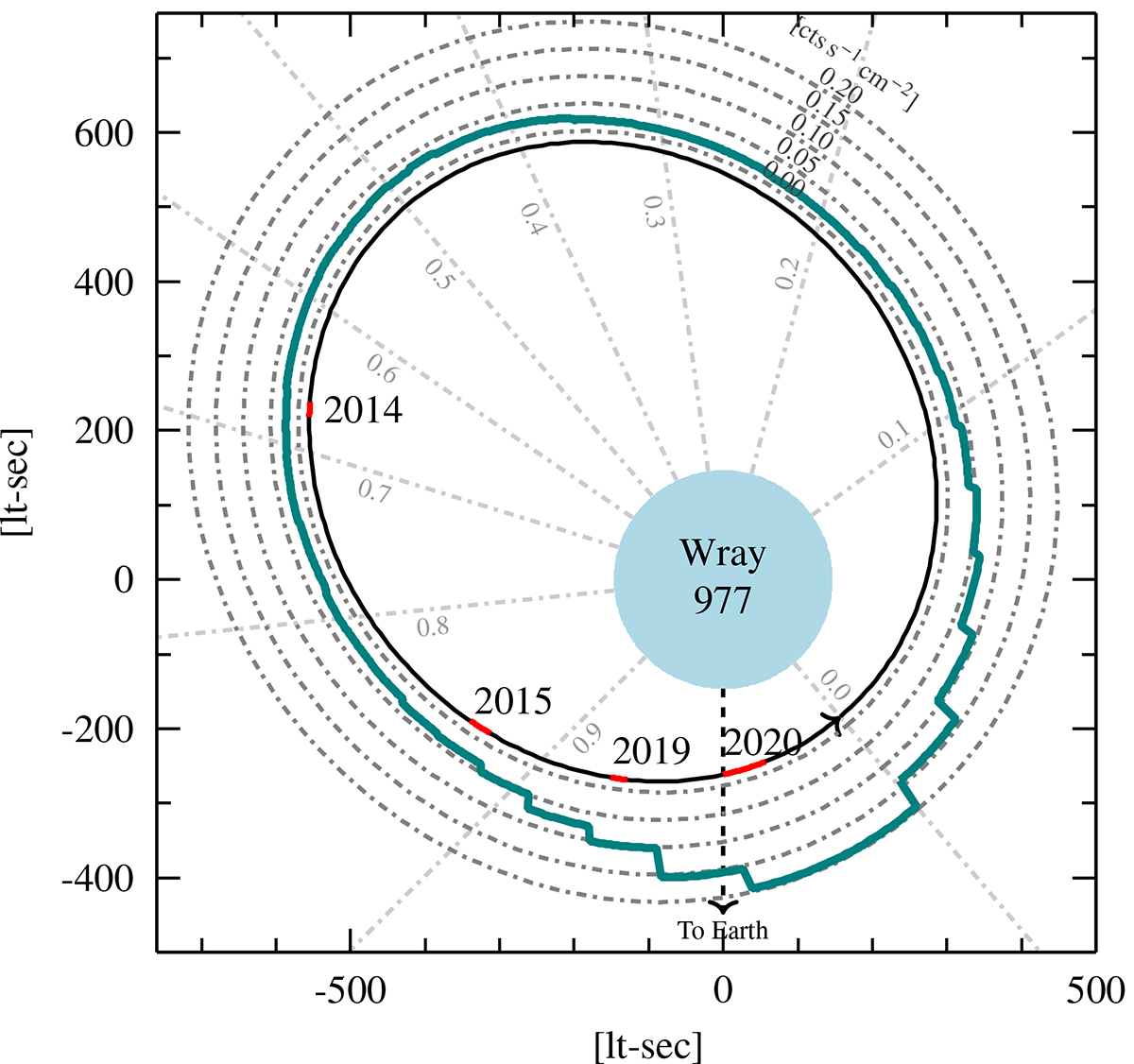Fig. 1.

Download original image
Orbital geometry of the system GX 301−2 based on Fig. 1 of Fürst et al. (2011). We show the NS orbit around its B hypergiant companion Wray 977 along with the orbital Swift (Krimm et al. 2013) count rate as determined from the long-term BAT light curve in blue. We further show the orbital phases of NuSTAR observations of GX 301−2 and the corresponding year in red. The 2022 observation is omitted as it was performed at nearly the same orbital phase as the 2014 observation. For the orbital parameters, we used the values presented by Kaper et al. (2006), that is, a sin i = 368.3°, e = 0.462, ω = 310.4°, and RWray 977 = 62 R⊙. We use an inclination of i = 55° (within the range given by Leahy & Kostka 2008). Epoch folding of the long-term Swift light curve yields an orbital period of 41.474 ± 0.006 d, which is in good agreement with the period stated by Doroshenko et al. (2010) as derived from Koh et al. (1997), including an orbital period derivative. We subsequently use the periastron passage TPA = 53531.65 MJD from Doroshenko et al. (2010). For the calculation of orbital phases, we take the orbital period derivative Ṗorb = −3.2 × 10−6 s s−1 (Doroshenko et al. 2010) into account.
Current usage metrics show cumulative count of Article Views (full-text article views including HTML views, PDF and ePub downloads, according to the available data) and Abstracts Views on Vision4Press platform.
Data correspond to usage on the plateform after 2015. The current usage metrics is available 48-96 hours after online publication and is updated daily on week days.
Initial download of the metrics may take a while.


